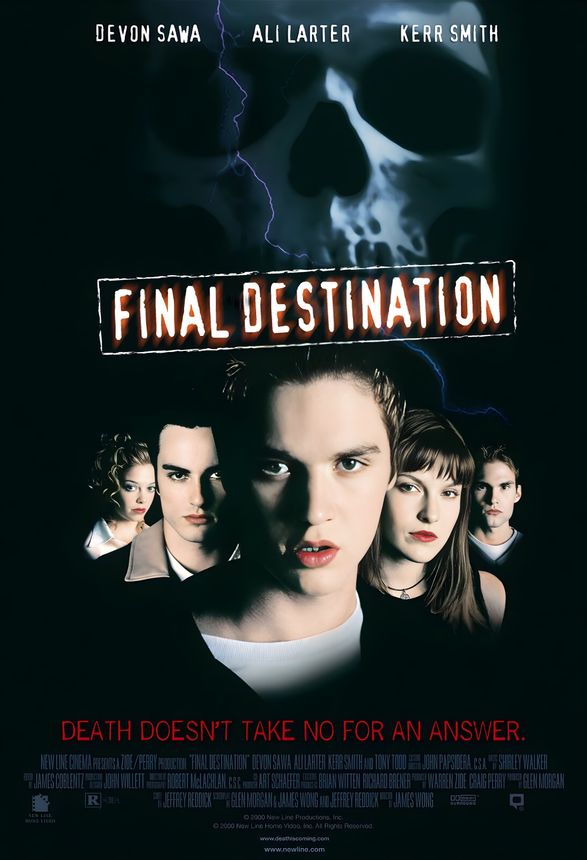Beep…Beeep…Beeeep...Beeeeeeeeep…Beeeeeeeeeeeeeeeeeeeeeeeeeeeeeeep…
This is not a test…
Do not adjust your…uh…eyes? brain? reading comprehension?
This is it, people…
Our last Halloween Holiday Spooky Scare-tacular Fun Run Race for the Cure Movie Marathon Extravaganza...article.
Thank you for coming on this journey with me, dear reader. It has been an honor and a privilege to write with you lo these past two weeks? Three weeks? Either way, it has been like a blissful dream…
You’ve indulged my every whim and tolerated my movie references and far-reaching metaphors. And for that, I thank you.
If you’ve read this far… perhaps you’re willing to read a little farther…
and arrive, finally, at The Final Destination… GO-LIVE!
You Made It Through UAT… But Can You Survive Production?
You survived UAT.
CAB approved your changes.
The dev team is confident.
You push the button… and watch your update glide into production.
For a moment, everything’s perfect.
Until it’s not.
A broken workflow here.
A data issue there.
Users vanishing mid-transaction.
You realize — every change has consequences, and the ones you didn’t plan for?
They’re coming for you.
Like the Final Destination franchise, failed go-lives often follow the same script:
Skip a review. Ignore a risk.
And fate (or QA) catches up.
No one escapes cause and effect.
But with the right process, you can outsmart destiny.
How to Not Star in a Go-Live Horror Sequel
Even in Final Destination, there’s always one person who reads the signs, follows the rules, and lives to deploy another day. Be that person.
“The Script Before the Scare”
- Write a go-live runbook so detailed it could win Best Original Screenplay.
- Define roles, timing, and rollback steps — because “Wait, who was supposed to do that?” is how horror movies start.
“Dress Rehearsal for Disaster”
- Run a mock cutover in a lower environment.
- If it breaks in staging, it’s a blooper. If it breaks in prod, it’s a box office flop.
“Deploy Like You’ve Seen This Movie Before”
- Use Change Models like a seasoned sequel director — stick to what works.
- Don’t improvise your way into a haunted deployment.
“Review the Footage”
- Celebrate the clean go-lives like a surprise happy ending.
- For the messy ones? Roll credits, then roll up your sleeves — the sequel (aka next sprint) is coming.
The Final Checklist: How to Not Star in a Go-Live Horror Story
Before you push to prod, run through this survival checklist — or risk being the next cautionary tale whispered in CAB meetings for years to come:
| ✅ | Survival Step |
|---|---|
| ☐ | 📜 Runbook created and shared with all stakeholders |
| ☐ | 🎭 Roles and responsibilities clearly defined |
| ☐ | 🔁 Rollback plan tested and documented |
| ☐ | 🧪 Mock cutover completed in lower environment |
| ☐ | 🧬 Change Model used (or created for future use) |
| ☐ | 🧾 CAB approval received and documented |
| ☐ | 📣 Communications plan in place for go-live day |
| ☐ | 🧲 Monitoring tools ready to track post-deploy issues |
| ☐ | 🎬 Review session scheduled (even if you think you won’t need it) |
| ☐ | 🍫 Snacks acquired — because no one survives on stress alone |
Don’t Tempt Fate
Before your next release, ask yourself:
“If fate struck tonight… how ready would my instance be?”
Because Final Destination: Production doesn’t have to end in disaster —
Not if you respect the rules of survival:
1. Stay alert.
2. Stay structured.
3. Never, ever say “What’s the worst that could happen?”


/Passle/687faed8406a27ba06a79b50/SearchServiceImages/2025-11-18-23-09-00-300-691cfc8ce22d9808a791cfb8.jpg)
/Passle/687faed8406a27ba06a79b50/SearchServiceImages/2025-10-22-19-24-13-567-68f92f5d096071562649ff47.jpg)
/Passle/687faed8406a27ba06a79b50/SearchServiceImages/2025-10-22-19-18-55-083-68f92e1fc103613cebe804ef.jpg)















